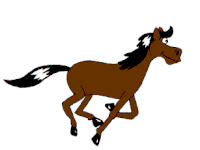Cartoon
Tono is a Baby cry
- For the band, see Cartoons.
A cartoon is any of several forms of illustrations with varied meanings that evolved from its original meaning. A cartoon (from the Italian cartone and Dutch/Flemish word "karton", meaning strong, heavy paper or pasteboard) is a full-size drawing made on paper as a study for further drawings, such as a painting or tapestry. Cartoons were typically used in the production of frescoes, to accurately link the component parts of the composition when painted onto plaster over a series of days. Such cartoons often have pinpricks where the outline of the design has been picked out in the plaster. Cartoons by painters such as Raphael and Leonardo da Vinci are highly prized in their own right.
Print media

In modern print media, a cartoon is a piece of art, usually humorous in intent. This usage dates from 1843 when Punch magazine applied the term to satirical drawings in its pages, particularly sketches by John Leech. The first of these parodied the preparatory cartoons for grand historical frescoes in the then-new Palace of Westminster. The original title for these drawings was Mr Punch's pencillings and the new title "cartoon" was intended to be ironic, a reference to the self-aggrandising posturing of Westminster politicians.
Modern gag cartoons, found in magazines and newspapers, generally consist of a single drawing with a caption immediately beneath or (less often) a speech balloon. Many consider New Yorker cartoonist Peter Arno the father of the modern gag cartoon (as did Arno himself). Gag cartoonists of note include Charles Addams, Gary Larson, Charles Barsotti, Chon Day and Mel Calman.
Editorial cartoons are a type of gag cartoon found almost exclusively in news publications. Although they also employ humor, they are more serious in tone, commonly using irony or satire. The art usually acts as a visual metaphor to illustrate a point of view on current social and/or political topics. Editorial cartoons often include speech balloons and, sometimes, multiple panels. Editorial cartoonists of note include Herblock, Mike Peters, David Low and Gerald Scarfe.
Comic strips, also known as "strip cartoons" in the United Kingdom, are found daily in newspapers worldwide, and are usually a short series of cartoon illustrations in sequence. In the United States they are not as commonly called "cartoons" themselves, but rather "comics" or "funnies". Nonetheless, to as "cartoonists". Although humor is the most prevalent subject matter, adventure and drama are also represented in this medium. Noteworthy cartoonists in this sense include Charles Schulz, Bill Watterson, Scott Adams, Mort Walker, Steve Bell.
Cartoons are used to depict different situations. The cartoonist is mustly showing his opions when doing political cartoons.
Motion pictures

Because of the stylistic similarities between comic strips and early animated movies, "cartoon" came to refer to animation, and this is the sense in which "cartoon" is most commonly used today. These are usually shown on television or in cinemas and are created by showing illustrated images in rapid succession to give the impression of movement. (In this meaning, the word cartoon is sometimes shortened to toon, which was popularized by the movie Who Framed Roger Rabbit). Although the term can be applied to any animated presentation, it is most often used in reference to programs for children, featuring anthropomorphized animals, superheroes, the adventures of child protagonists, and other related genres.
In science
The term "cartoon" is sometimes used in a scientific context to mean a diagram, particularly one that depicts a generalised occurrence rather than a specific example.
also used to depict scenes of people
External links
- Caricatures and Cartoons from the American Art/Portrait gallery Collection (2003) Kent Boese Smithsonian Institution Libraries
- Celebrity Caricature: Selections from the Smithsonian Institution Libraries
- Don Markenstein's Toonopedia
- Big Cartoon Database
- Cartoon Research Library
- Golden Age of Cartoons
- Greekartoon
- A free cartoons directory : The Cartoon Spot
- Pro Toonerz - International Professional Cartoonists Directory
- London Cartoon Gallery - Editorial Cartoons
- [www.kiotron.com Kiotron
